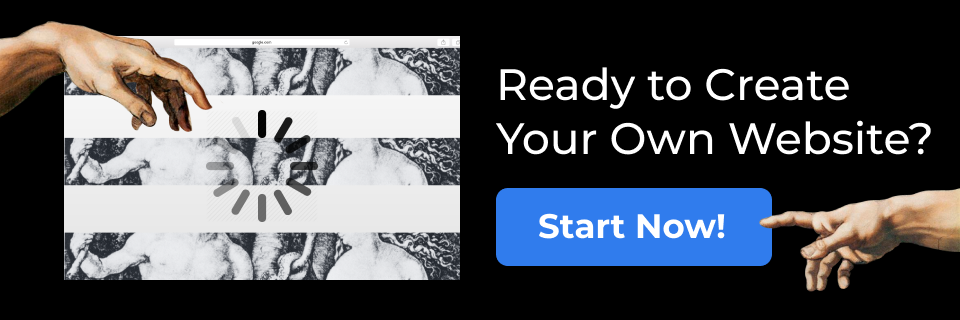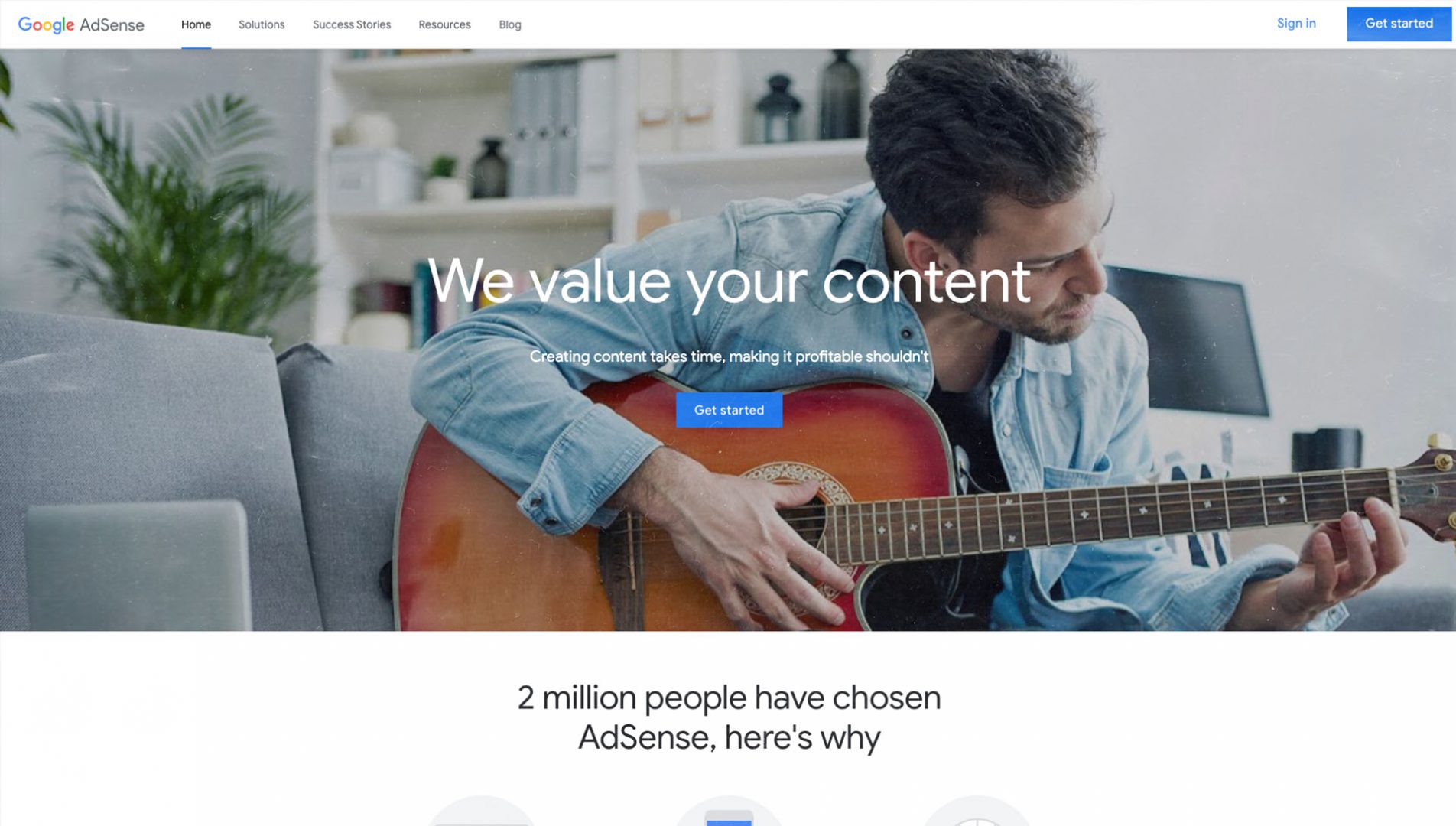Did you know that the number of bloggers in the US alone is 31.7 million and growing? Well, that’s an eye-opener, isn’t it? It appears that more people are taking their passions online, and many of them are even embracing the idea of making money that way.
Do all of these internet enthusiasts achieve success earning loads of dollars with their websites? Believe it or not, some fortunate ones indeed make six figures, have flexible working hours, and take care of business while traveling the world and enjoying life. Sounds sweet, right? It is. However, like everything good in life, online monetization doesn’t come easy, and we won’t try to convince you of the opposite.
Let’s set the record straight, while creating a website is not a problem thanks to website builders like Boxmode, turning it into a money-making machine can take years of hard work and diligence. Why? Because most web monetization techniques are based on internet traffic. And there’s no other way to drive traffic but to create high-quality content consistently and in large quantities before you can even start contemplating making money online.

However, it is not impossible to monetize your web presence. Many successful online entrepreneurs who make millions from their online presence prove that having a strong business idea and enough patience and determination to bring it to life can pay off with very handsome dividends. Take Jon Morrow of SmartBlogger or Sam Dogen of Financial Samurai as examples. Who says you can’t do the same thing?
Here are ten proven monetization techniques you can use to start generating revenue with your website.
1. Affiliate marketing
Affiliate marketing is a very popular monetization technique. It is quite straightforward and doesn’t affect your website’s user experience as long as you apply it with moderation.

As an affiliate marketer, your job is to mention brands or products in your content while providing corresponding links. When your readers click on the link and purchase the product, you get a fixed commission from the sale. For example, you own a fishing blog and promote an affiliate link to an online store that sells fishing gear. Once your visitor buys the product after clicking the link, you get paid. It does sound easy, but there’s a catch. To succeed in affiliate marketing, you need to ensure the following:
- Your website receives enough traffic to generate clicks on the affiliate links.
- You find matching brands to collaborate with. Unless your audience is interested in the products you promote, you won’t be able to drive sales. What’s more, your affiliate links will look out of place.
- Your site attracts enough visitors for brands to take an interest in you.
- You don’t conceal your relationships with brands. Needless to say, people don’t like to feel used for profits. It is much better if they feel they are supporting you by purchasing from the brands you work with.
- You don’t go over the top with your affiliate pitches. Make it too much, and your visitors will start viewing your website as an advertising board and will likely leave for good. Nobody likes sell-outs.
While affiliate marketing can be an effective way to monetize your website, it relies heavily on your content. Your affiliate links need to be organically introduced into your posts. And the following types of content are the most suitable for this purpose.
Product reviews
Ninety-three percent of consumers admit that product reviews influence their purchasing decisions. Writing them for your affiliate marketing endeavors comes as a no-brainer. The best thing about product reviews is that you can give your own take on literally anything, from physical products you use to online services. However, you need to make sure that your reviews are unbiased and that your affiliate links promote only the products and services you genuinely like and believe in. Lying to your audience to gain profits has never been an effective tactic from the long-term perspective. You could probably get away with it a couple of times, but once your readers understand your reviews are fake, you will lose credibility forever.
Personal recommendations
If your audience perceives you as an authority in your niche, you can leverage your reputation to recommend certain products or services that you use. You can either do it directly in your posts or even go as far as to create a dedicated page on your site where you list your favorite items and provide corresponding affiliate links. But don’t forget to mention that you earn a commission from each sale to keep things transparent.
Guides and tutorials

This type of content is particularly popular on the web, but it is also great for pitching your affiliate links. You can teach your readers or viewers how to do things they lack knowledge in while promoting products and services that could help them solve the task. This is a win-win situation in which you are very likely to get your share from affiliate sales.
2. Selling physical or digital products
Ecommerce is gradually becoming one of the most viable and straightforward monetization methods as it generally requires less investment in content marketing. However, to be able to sell online, you need to create something for sale first.
If it’s a physical product, you need to come up with a powerful idea, research the market, study your target audience and competition, and then focus on the production flow and technology, as well as inventory management, logistics, and shipping (these can actually be fully entrusted to a third-party agency). Your product shouldn’t necessarily be complex to become a success. Simple yet interesting goods, like on-demand merch, knitwear, healthy food products and cosmetics, are extremely trendy these days. Make sure to study the current consumer trends and come up with your unique product offer.

When it comes to digital products, you’ve got loads of options. You will certainly need to invest time and effort in creating something you will later promote and sell through your website. But once you have the material (and it appears to be successful), you can expect to secure passive income for years to come. Here are a few types of digital products you may consider selling:
- E-courses. Launching an online course is an excellent way to turn your expertise into a tangible product. If you are a certified expert in any field, try to develop your own learning program and create engaging educational materials in the form of downloadables and videos. Check out some inspiring examples of e-courses here.
- E-books. We live in a wonderful age when you don’t need a publisher to take your book straight to your readers. Having your own site, you can sell the digital version of your book without any intermediaries.
- Audiobooks. Apart from e-books, you can as well release your own audiobooks. They are becoming more relevant as people get less time to read. But they can listen to your book while commuting or running errands.
- Various downloadable content. This could be anything your imagination comes up with: stock photo packages, templates, checklists, research reports, case studies, graphics, music files, videos, etc.
- Applications and plugins. If you are a programmer who can develop a comprehensive app or tool for desktop or mobile devices, selling it through your own site can be very profitable. The same goes for various plugins and add-ons you could develop for other popular services.
3. Paid access to premium content
Do you have a lot of cool articles on your blog that people enjoy reading? Then there’s yet another monetization opportunity in selling the best of them! Look for the most in-depth and elaborate articles that you have and set up paywalls for each of them. Readers who are genuinely interested in your insights will pay to access your most valuable content assets.
However, to monetize premium content, it is vital to balance paid articles and free pieces. You will first have to establish an authority in the niche you’re covering, and free articles will allow you to shape your initial readership base. Once your readers are deeply engaged with your content, you will be able to sell the best instances.
Monetization through paid access is especially effective if you have unique materials to offer, such as research data, scientific studies, statistics, exclusive interviews, etc.
4. Paid membership
Can you think of any add-value benefits you could offer to your most loyal followers? If you can, then another feasible monetization method is setting up paid membership on your website. This can be a private area on your site where only the paying subscribers are allowed. The subscription fee will depend on the number (and quality!) of the exclusive perks you are ready to offer. These could be:
- Access to private forums, job boards, member groups, workshops, and online/offline events;
- Additional educational materials;
- Exclusive user experiences;
- Special offers and discounts for your products;
- Personalized newsletters;
- The possibility to contact you directly and get a free consultation, etc.

Make the membership fee affordable for your target audience and ensure your perks are irresistible, and this monetization technique will provide you with continuous revenue flow.
5. Donations
If you don’t feel like forcing your loyal visitors to pay for your content (or your blog is only starting out), you could rely on their goodwill and politely ask for a donation. There’s no shame in doing so since creating high-quality content is hard and time-draining work – and you do it for free for your readers. Asking to support your cause is nothing but a fair deal. In fact, you will be surprised to know how many of your fans will gladly pitch in to show their appreciation.
There are two ways to go about this monetization method. You can either ask for a one-time donation or monthly donations. It is best to offer both options so that your audience can choose which one suits them best.
By the way, with Boxmode, you can easily add a PayPal button to your site and start raising funds from the get-go.
6. Sponsored posts
If affiliate marketing feels too personal, and you have no desire to promote brands on your own account, you could try cooperating with companies by hosting their posts on your website. In this case, brands will simply pay for a spot on your site and the opportunity to expose their content to your audience. Yet again, this monetization tactic is only possible if your site attracts enough visitors for companies to get interested in pitching a sponsored post to you.

Sponsored posts can take different forms. These can be articles on the topics relevant to your site, which would contain a link to brands’ websites. Or it can be a comprehensive review of the company’s product. Brands can even buy a spot in your newsletter so that your readers would click through to their site. The same goes for social media posts.
Accepting sponsored posts may seem a relatively easy way to monetize your website or blog. However, you should be careful not to abuse this monetization technique. If you allow too many sponsored posts on your website, you risk turning it into an advertising board, which will put off many of your visitors.
In addition, sponsored posts are frowned upon by Google if used carelessly. In this regard, it is highly recommended that you add rel=”sponsored” or rel=”nofollow” attributes to the HTML code of the pages that feature sponsored content. This will help you avoid Google penalties.
Last but not least, you should disclose your collaborative relationships with brands to your audience by putting a distinct “Sponsored” tag before every sponsored post you publish. This practice allows you to stay honest with your readers and differentiate your own content from sponsored posts.
7. Paid email newsletters
Asking your readers to pay for newsletters may sound a bit too much. Yet, many authoritative content providers use this monetization method quite effectively (e.g., Stratechery, The Browser, De Correspondent). Sure, most blogs offer their newsletter for free, as this helps build the readership and collect valuable leads. However, some of your readers won’t mind chipping in for a premium experience.
If you have already established yourself as an authority, and many loyal followers value your content, consider offering them an extended and even more meticulously curated collection of content highlights delivered consistently right to their inbox! This monetization strategy works best for consulting and research firms, as well as businesses specialized in narrow niches.
8. Paid expert services
Do you have any specific hard skills you could offer online? Then go ahead and monetize them! Professional service providers are always in demand. And if you manage to impress your potential customers with a dazzling portfolio website, you automatically increase your chances of earning even more.
Whatever it is you are good at, be it copywriting, web design, graphic design, photography, app development, SEO, business consulting, etc., it is your most potent monetization asset. Meanwhile, a well-maintained website can help you get yourself in front of your prospects better than anything else.
You can start by creating a portfolio website with Boxmode. Add information about yourself and your expertise, and then showcase a few work examples and testimonials. You’ll be ready to go in no time!
9. Display ads
While showing display ads is sometimes considered a controversial monetization technique, it is still one of the most common ways to make money online. Why do many people think that display ads do more harm than good? For one, with so many internet users resorting to ad blockers, it becomes more difficult to ensure that your message reaches the target audience. Secondly, to drive any substantial profits with display ads, your website needs to generate lots of traffic (although this is true for almost all monetization methods). But most importantly, display ads can get really annoying, and many visitors have negative feelings about websites that use them.
Nevertheless, display ads are still going strong, and a great number of websites keep using them as one of their revenue sources. A great thing about display ads is that you can use them almost effortlessly and don’t need to ask your audience to pay for anything directly. You get money for selling ad space on your website so that other companies can show their advertisements to your visitors. The revenue can be calculated based on clicks or impressions. But, as said above, it highly depends on your traffic: the more visitors you get, the more of them will be exposed to your ads.
You can start a display ad campaign with any advertising network, but the most popular is Google AdSense.

10. Selling websites
This is not the easiest way to make money on the internet, but people still practice it. After all, your website is like real estate, only on the web! If you’re good at building and promoting websites, you can try to monetize this skill.
There are two ways of approaching this business: creating websites from scratch or buying underperforming websites, improving them, and then selling. The latter is called ‘website flipping.’ Indeed, it is hard work turning a malfunctioning site into something of value. But if you know how to do it right, you can yield revenues from ready-made websites 5-10 times higher than your investment. Intrigued? Then you should visit Empire Flippers and learn more about the ins and outs of the business.
Time to monetize your site like a pro!
Knowing these ten monetization techniques, you can now take a step back and consider which one suits you best. As we told you at the beginning, earning online is almost like a day job. It requires tons of time and patience. But if you are dedicated enough, you will eventually appreciate how it pays off and allows you to work flexible hours. Who knows, maybe your project turns out to be a real cash-making machine! You’ll never know until you try.


